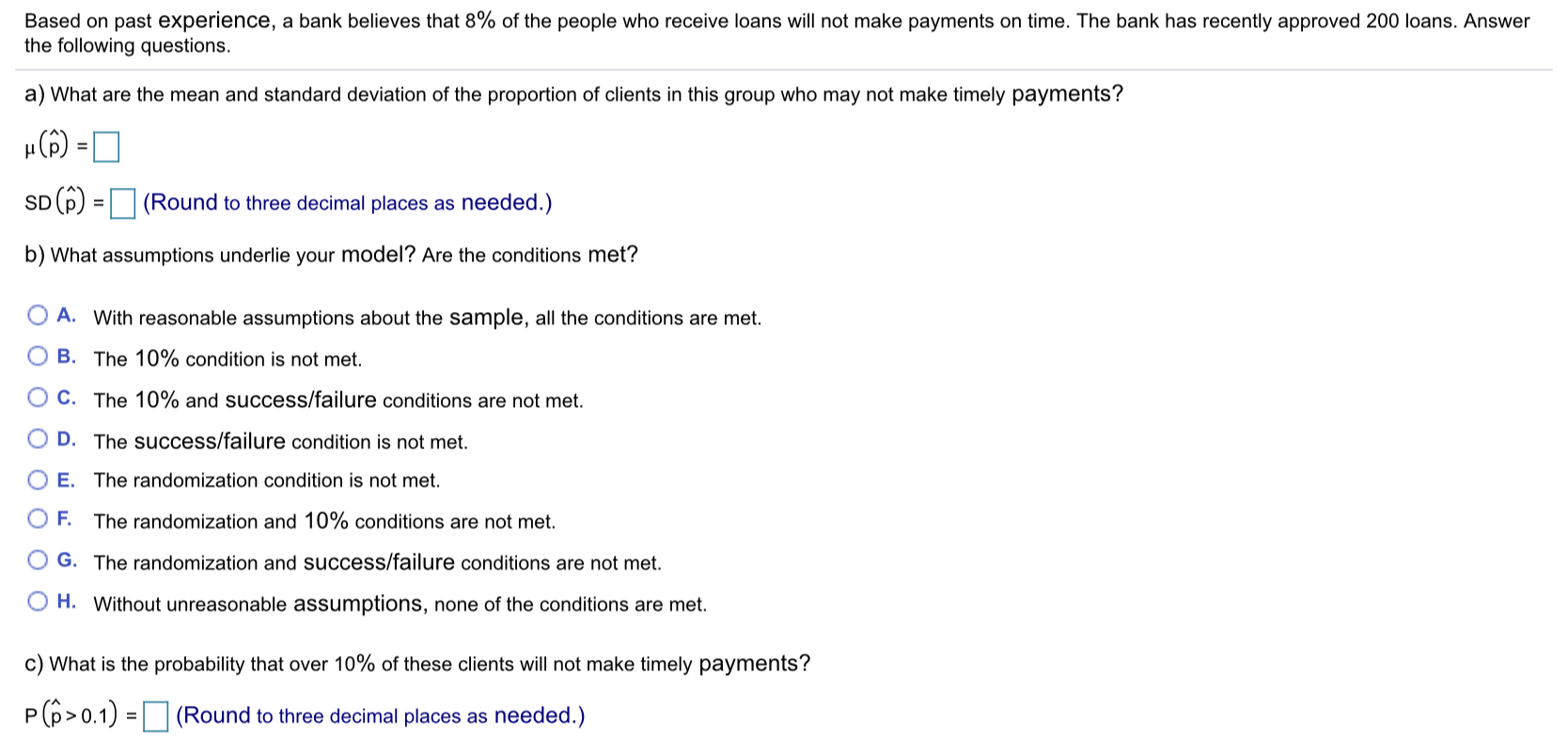Hi I need help with the following questions! Thank you very much! Steps are not necessary.
For their class project, a group of Business students decide to survey the student body to assess opinions about a proposed new student coffee shop to judge how successful it might be. Their sample of 200 contained 50 first-year students, 50 sophomores, 50 juniors, and 50 seniors. Complete parts (a) and (b) below. a) Do you think the group was using an SRS? Why? Choose the correct answer below. O A. Yes; it would be nearly impossible to get exactly 50 from each class by random chance. O B. No; it would be nearly impossible to get exactly 50 from each class by random chance. O C. Yes; it is highly likely that exactly 50 from each class will be surveyed by random chance. O D. No; it is highly likely that exactly 50 from each class will be surveyed by random chance. b) What kind of sampling design do you think they used? Choose the correct answer below. O A stratified sample O A multistage sample O A cluster sample O A simple random sampleSome people have been complaining that the children's playground at a municipal park is too small and is in need of repair. Managers of the park decide to survey city residents to see if they believe the playground should be rebuilt. They hand out questionnaires to parents who bring children to the park. Describe some possible biases in this sample. Select all that apply. El A- The sampling scheme suffers from undercoverage. because only people who come to the park to use the playground will respond. Parents who are dissatised with the playground will not come. I] B. The sampling scheme suffers from voluntary response bias. Only parents who choose to visit the park and feel strongly about the issue are likely to respond. I] C. The sampling scheme suffers from response bias. The survey influences parents to respond in a particular way. I] D. There are no possible biases in this sampling scheme. The Canadian Census collects demographic data for specific groups such as lone-parent families, seniors, and those from specic language groups via what is commonly referred to es the "Short Form." The Short Form questionnaire is issued to each household in Canada. and all Canadian residents are legally required to complete the form. In addition to the "Short Form." a more detailed (long) form, sent for completion to certain households only. used to be mandatory, but became voluntary instead at the time of the 2011 census. What are the impacts of the change from mandatory to voluntary participation in the longer census? Choose the correct answer below. 0 A- The move to voluntary completion of the more detailed form introduces voluntary response bias. In particular, since disadvantaged households may choose not to complete the form, the results may underrepressnt those groups in Canadian society. 0 B- The move to voluntary completion of the more detailed form adds validity to the census. In particular. people who provide inaccurate answers out of spite from being forced to participate will no longer be factored in. O c. The move to voluntary completion of the more detailed form introduces response bias. The households that receive the extra form have the opportunity to be counted multiple times and end up overrepresented in the results. 0 D- The move to voluntary completion of the more detailed form introduces nonresponse bias. Since the survey is longer, very few households if any will elect to complete it instead of the Short Form. severely impacting the results. Based on past experience, a bank believes that 8% of the people who receive loans will not make payments on time. The bank has recently approved 200 loans. Answer the following questions. a) What are the mean and standard deviation of the proportion of clients in this group who may not make timely payments? H (p) = 0 SD (p) = (Round to three decimal places as needed.) b) What assumptions underlie your model? Are the conditions met? O A. With reasonable assumptions about the sample, all the conditions are met. O B. The 10% condition is not met. O C. The 10% and success/failure conditions are not met. O D. The success/failure condition is not met. O E. The randomization condition is not met. OF. The randomization and 10% conditions are not met. O G. The randomization and success/failure conditions are not met. O H. Without unreasonable assumptions, none of the conditions are met. c) What is the probability that over 10% of these clients will not make timely payments? P (p> 0.1) = (Round to three decimal places as needed.)










